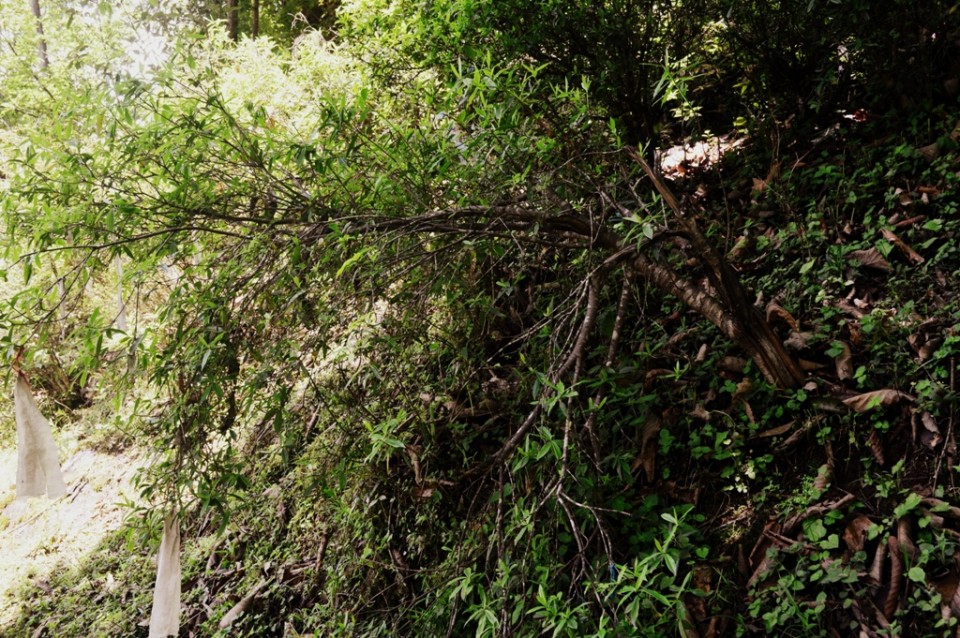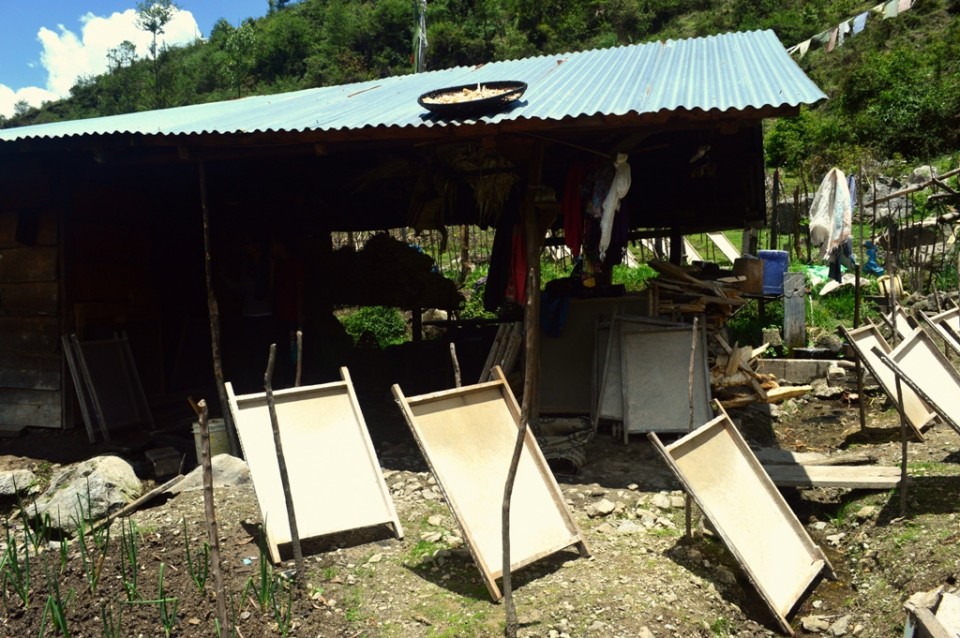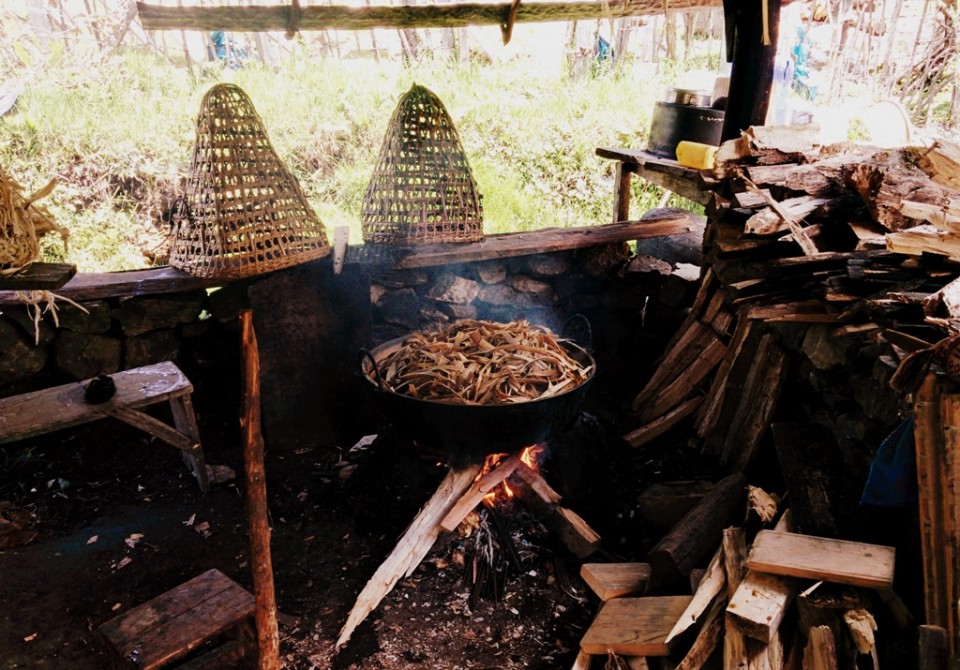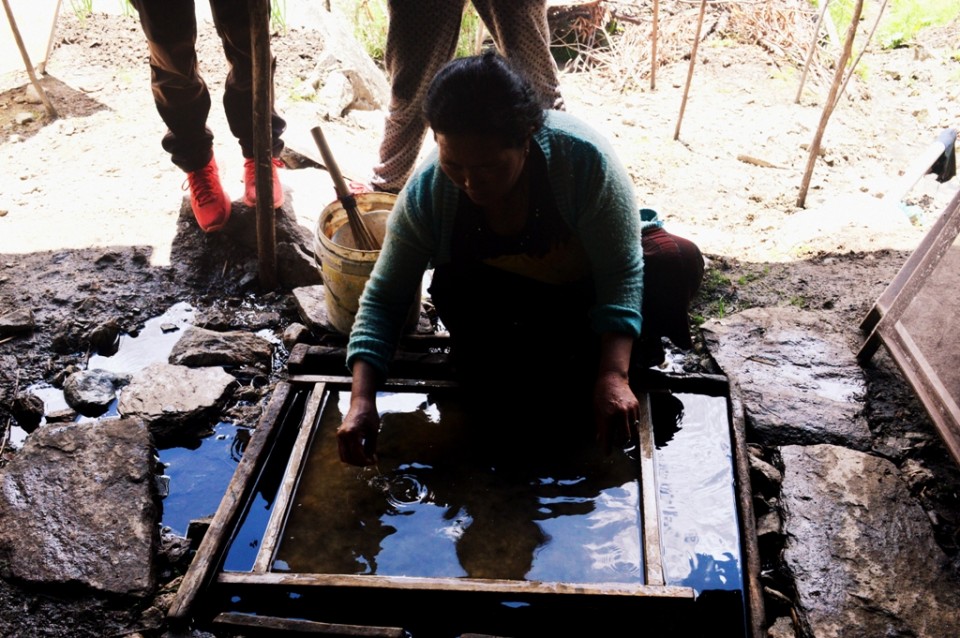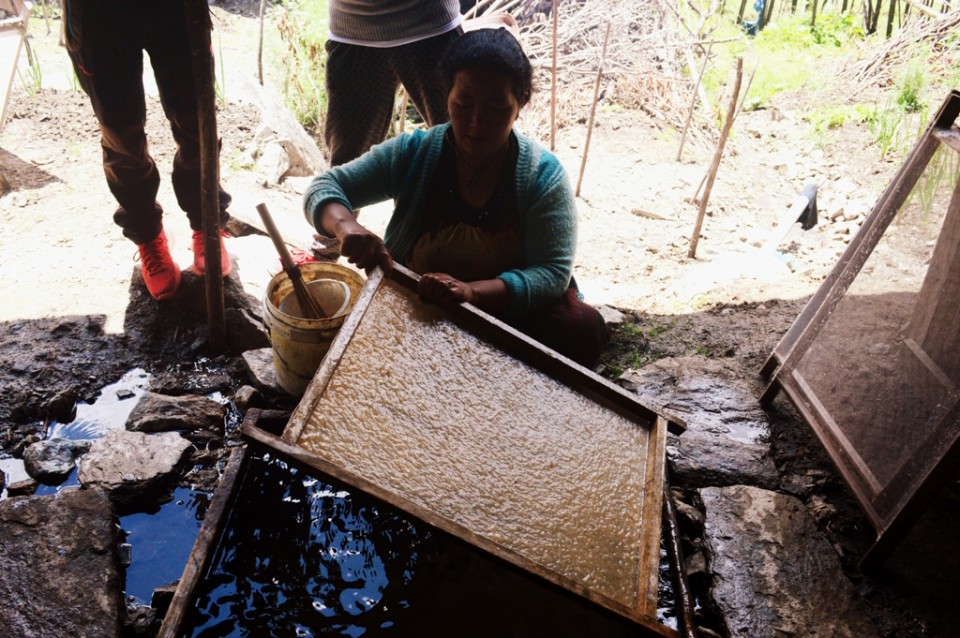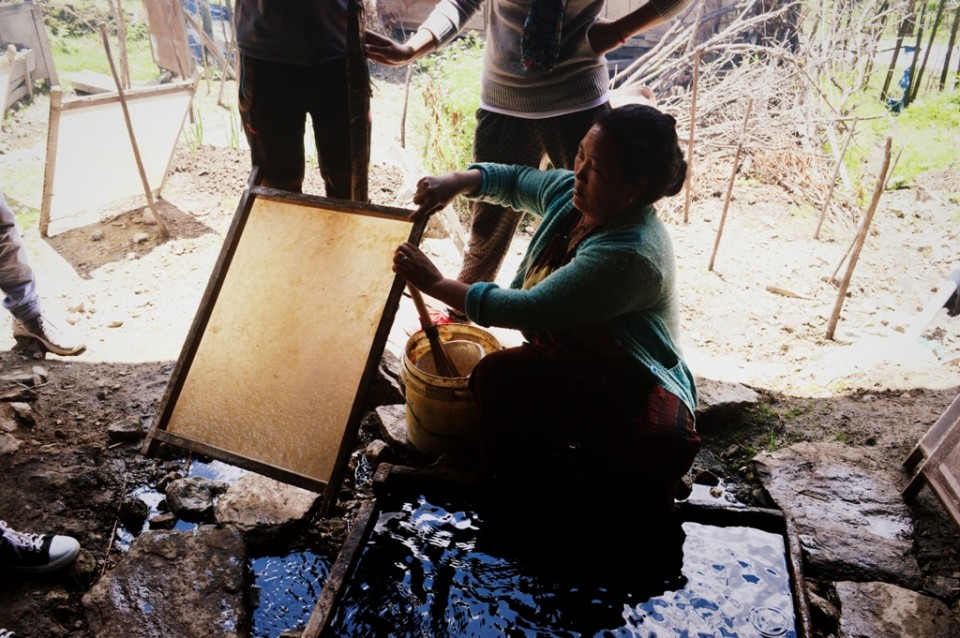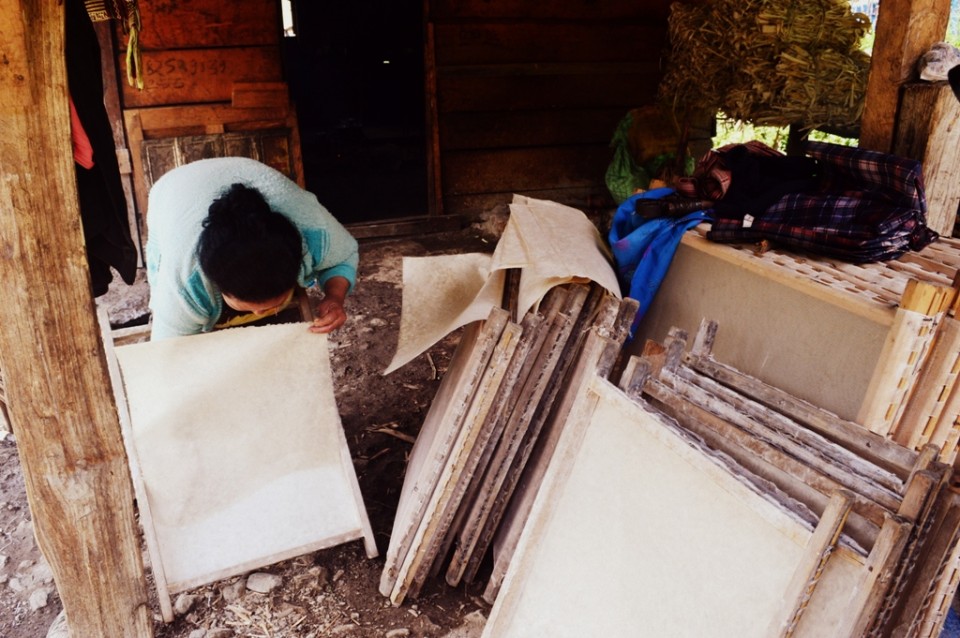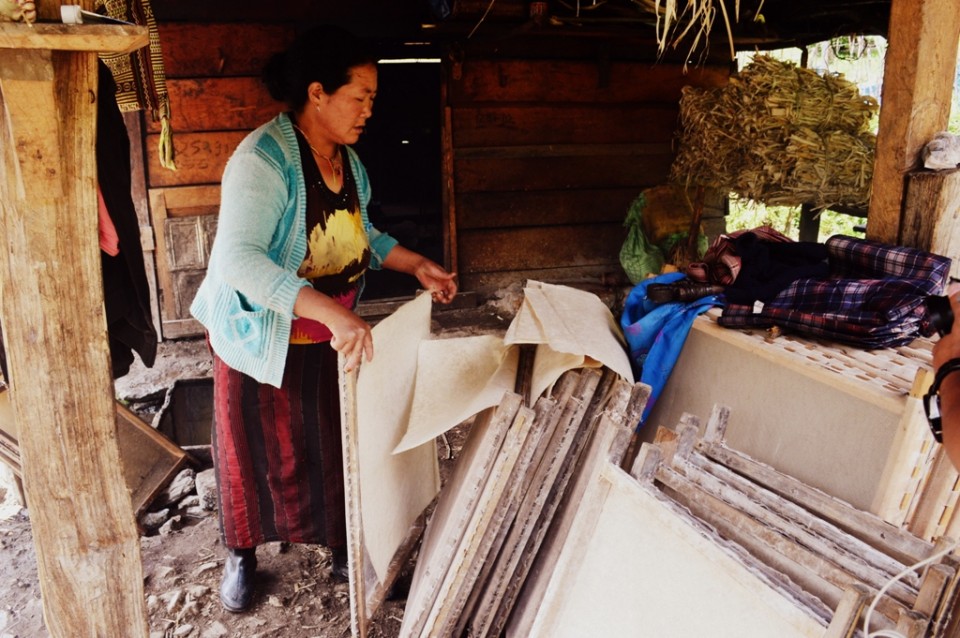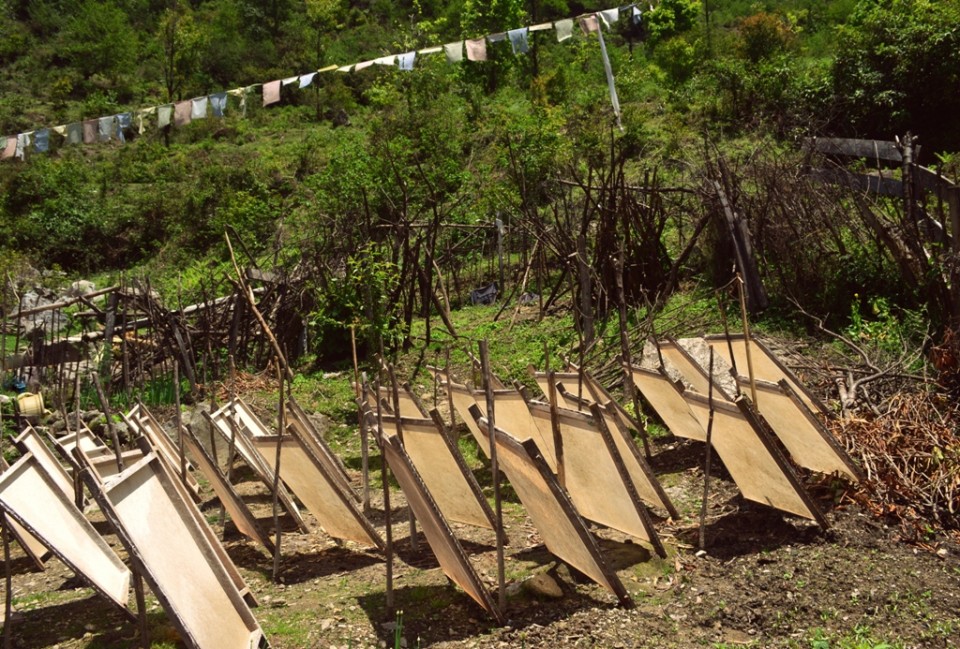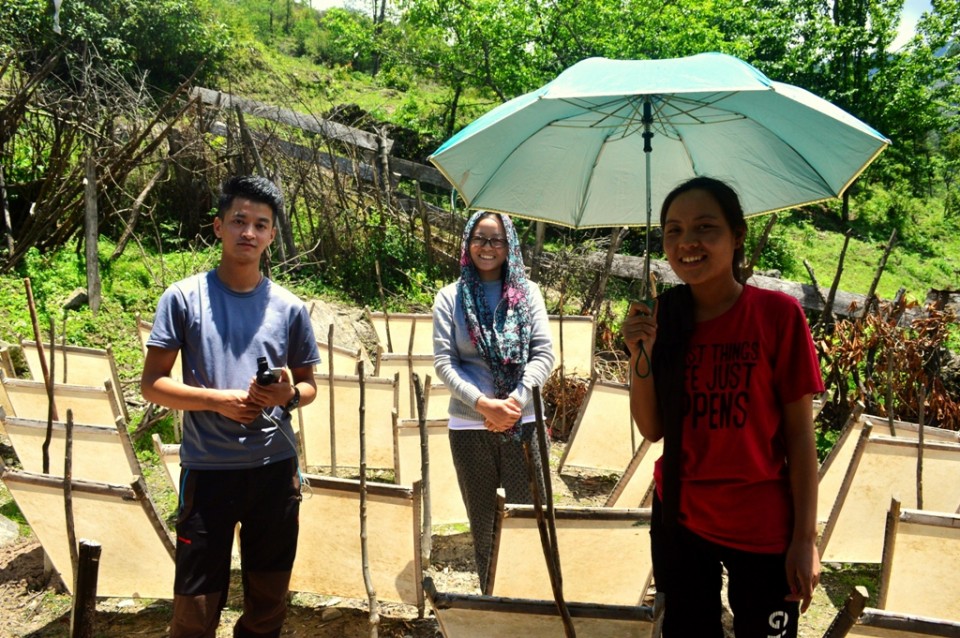Tawang Focus – The Art of Making Paper
 Holiday Scout
posted on 04 June 2017
Holiday Scout
posted on 04 June 2017
When paper was first made in the Himalayas cannot be dated back exactly, but archaeological finds indicate that it has been used for writing Buddhist manuscripts for over a thousand years. This very art, handed down for generations, is what we hoped to witness.
After 90 minutes drive on a rough road that transverses several mountainsides we arrived in Mukto, home to a population of around 700. We were warmly welcomed by Rinchin Gombu, former village Sarpanch and patron of the local NGO whose aim it is to preserve handmade paper production in Mukto.
However, we quickly learned that this undertaking faces difficult odds, for as of today as few as 7 or 8 households still practice the art of shuk which means ‘paper’ in the Tawang Monpa language. We went to view the paper making process and watched as an elderly woman showed us the steps.
First, the bark of the indigenous shuk shang or paper tree is harvested and delivered to the paper maker for further processing. Those who harvest this all-important bark receive half of the finished paper as barter for their labor. It appears that only a handful of men still do the harvesting at all.
The shuk shang bark is peeled and dried in the sun for 2 – 3 days. Then it is soaked in water, cut into pieces, boiled twice and made into a paste without any additives. Next, a fine screen is placed in a water bath over which the bark paste is expertly spread. The screen is then stood upright in the sun to dry and finally, the sheet of finished paper is removed.
The manual process behind making this paper is very time consuming and cannot be replaced by machinery without sacrificing the unique and beautiful texture of the finished product. The paper is sold to local craft centers and to monasteries. But unlike weavers, for example, whose goods are finding their way into a blossoming market for boutique textiles, the paper makers of Mukto do not enjoy a channel of international demand.
Ironically, it is the remoteness of Mukto which has helped preserve the indigenous knowledge of papermaking in this village over the eons; but the same isolation has also pushed the time-honored technique to the brink of extinction.
Tags: North East India, Crafts, Cultural Preservation, Arunachal Pradesh, Tawang, Monpa, Handmade Paper, Shuk, Discovery



